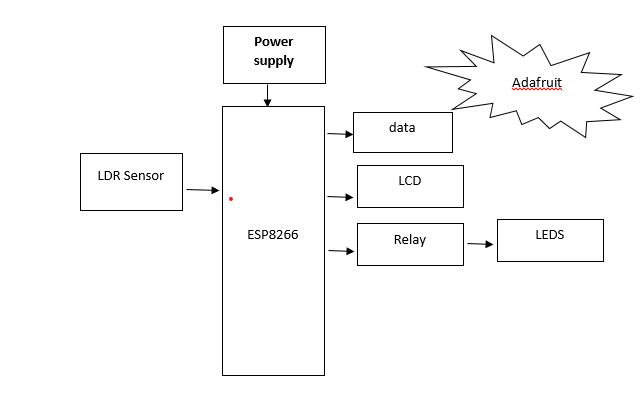An Iot Platform Integrated Into An Energy Efficient Dc Lighting Grid
Abstract
This project presents the design and implementation of an IoT-based energy-efficient DC lighting grid integrated with smart control features. The system uses LED lights powered by a DC source to minimize energy consumption and enhance efficiency. An LDR (Light Dependent Resistor) sensor is used to detect ambient light levels; when the light intensity drops below a predefined threshold, the system automatically activates additional LEDs to maintain adequate lighting. The entire lighting setup is connected to the Adafruit IoT platform, allowing users to remotely monitor and control the LED lights from anywhere via the internet. An LCD display is also integrated to show the system status, including sensor readings and LED activity. This intelligent lighting system not only promotes energy savings but also offers remote accessibility and automation, making it ideal for smart home and smart building applications.
NOTE: Without the concern of our team, please don't submit to the college. This Abstract varies based on student requirements.
Block Diagram

Specifications
Hardware requirements:
- ESP8266
- LDR Sensor
- LCD
- Relay
- Power supply
Software requirements:
- Arduino IDE
- Embedded C
Learning Outcomes
- Arduino Pin diagram and Architecture
- How to install Arduino IDE Software
- Setting up and Installation procedures for Arduino IDE
- Introduction to Arduino IDE
- Commands in Embedded C
- How to install Libraries?
- Basic coding in Embedded C
- Working of LDR Sensor
- Working of LEDS
- How to interface Relay with Nodemcu
- Working of Nodemcu
- Working of LCD
- How to interface LCD with Nodemcu?
- About Project Development Life Cycle:
- Planning and Requirement Gathering (software’s, Tools, Hardware components, etc.,)
- Schematic preparation
- Code development and debugging
- Hardware development and debugging
- Development of the Project and Output testing
- Practical exposure to:
- Hardware and software tools.
- Solution providing for real time problems.
- Working with team/ individual.
- Work on Creative ideas.
- Project development Skills
- Problem analyzing skills
- Problem solving skills
- Creativity and imaginary skills
- Programming skills
- Deployment
- Testing skills
- Debugging skills
- Project presentation skills
- Thesis writing skills





 Paper Publishing
Paper Publishing
